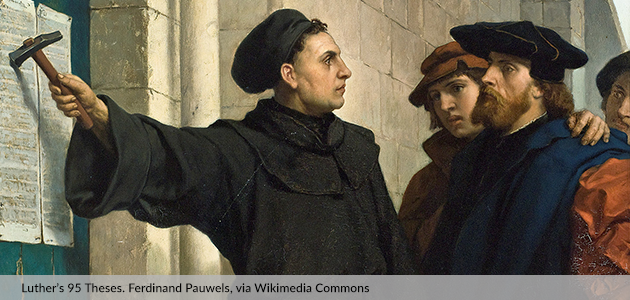13 November 2017
The Ongoing Reformation
by Dr Roshan Allpress
We have marked the recent 500 year anniversary of the Reformation in a number of ways at Laidlaw – not least by a copy of the ninety-five theses taped to the front door.
Martin Luther triggered what was without a doubt the most important movement of change in the Church in its second millenium, but one tinged with two great “what ifs”. What if, in the words of Pope Francis, Luther had been able to fulfil his intention to “renew the Church, not divide her”?1 What if, after their rupture with Rome, the leading Reformers had been able to build a unified movement, instead of splintering further into countless denominations?
On 31 October, Reformation day itself, church leaders from across Auckland and as far afield as Nelson gathered at our Henderson campus for the Auckland leg of the Building the Church for Today and Tomorrow conference, a collaboration between Christian Savings, Carey Baptist and Laidlaw. The timing was a coincidence, though an appropriate one, as we were gathered from many different denominations and congregations to discuss how the Church in Aotearoa New Zealand might continue to adapt and reform ourselves in order to grow in faithfulness over the coming generations.

Among the challenges and opportunities that we face is the decline in cultural and nominal Christianity that shows up in census data, and therefore a society where assumptions about a baseline Christian ethic and Biblical literacy in wider culture no longer hold true. We have many church buildings that were not designed for how we now worship and fellowship together, and too many structures that have been poorly maintained.
Yet, as the Church, we continue to be the bearers of the Gospel of Jesus, and the agents of the proclamation of hope for the world. We are people of God’s new creation, bringing healing, meaning and flourishing, and seeking to live out the transformation of the Spirit amidst the realities of the world around us.
Like Luther, and with no less energy, we need to look carefully at how our church institutions, culture and leaders are serving the cause of the Gospel, and be willing to reform ourselves where necessary. We should take heart in the reality that this kind of process has been a source of renewal throughout Christian history – though rarely on the scale of the sixteenth century. During the late 1690s for example, small “Reformation Societies” were formed by Gospel-shaped people across England, inspired by the challenge of continuing what Luther had started on a local scale. Essentially home groups, these societies met to read the Bible together, to encourage each other in faithfulness, and to work to renew their communities. Their successes were unglamorous, but they laid the groundwork for the Evangelical renewal of the eighteenth century – with its revivals, institutional innovations and the missionary movements that spread the Gospel around the globe.
For us there lies that possibility that we will, by the grace of God, be able to adapt and reform our churches, and to do so with unity. All denominations around New Zealand face parallel challenges in leadership, discipleship, and in intergenerational momentum. If our innovators are able to learn to bring renewal to existing structures, instead of starting from scratch, and if our leaders are able to work collaboratively to share problems and address them together, then we too might achieve renewal that is worth remembering in 500 years.
